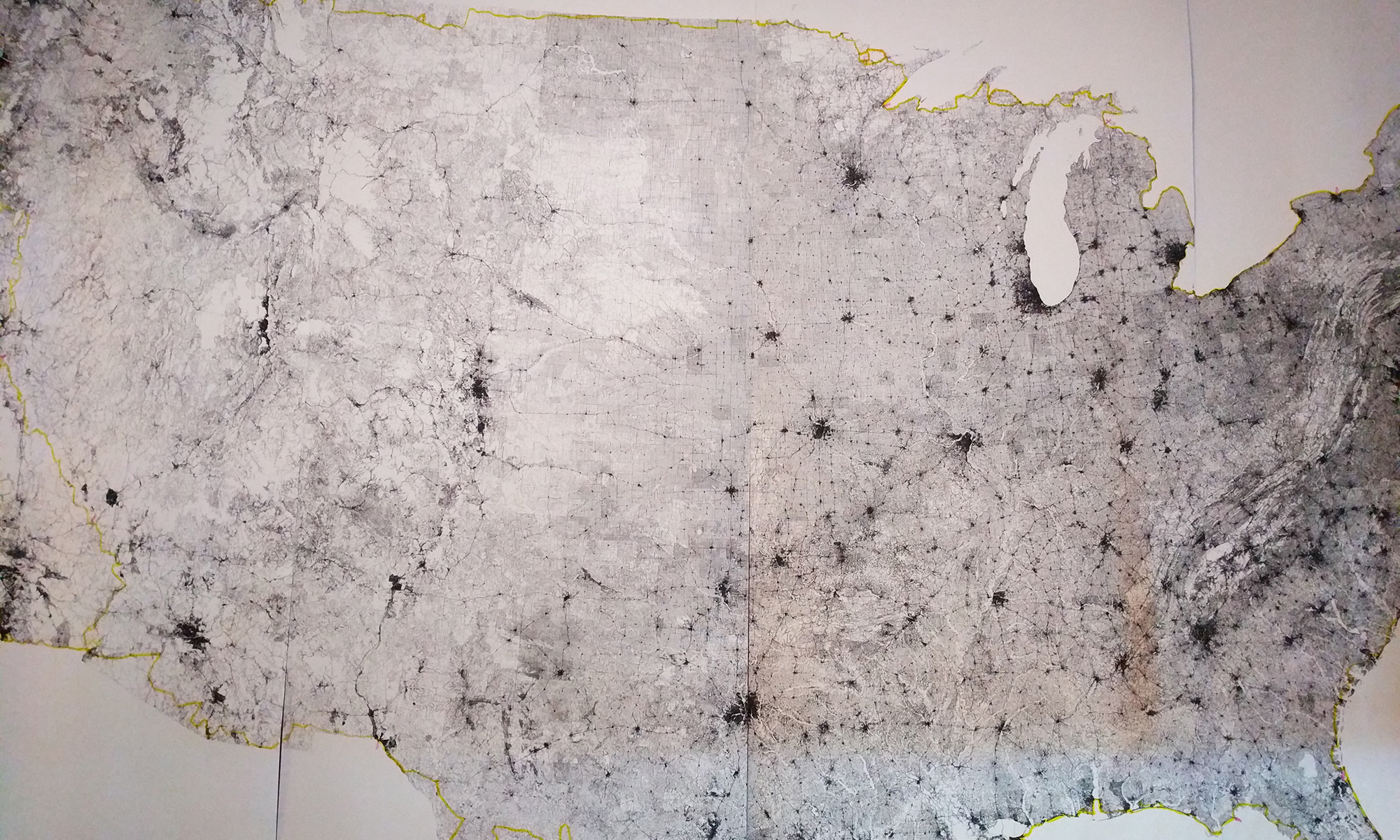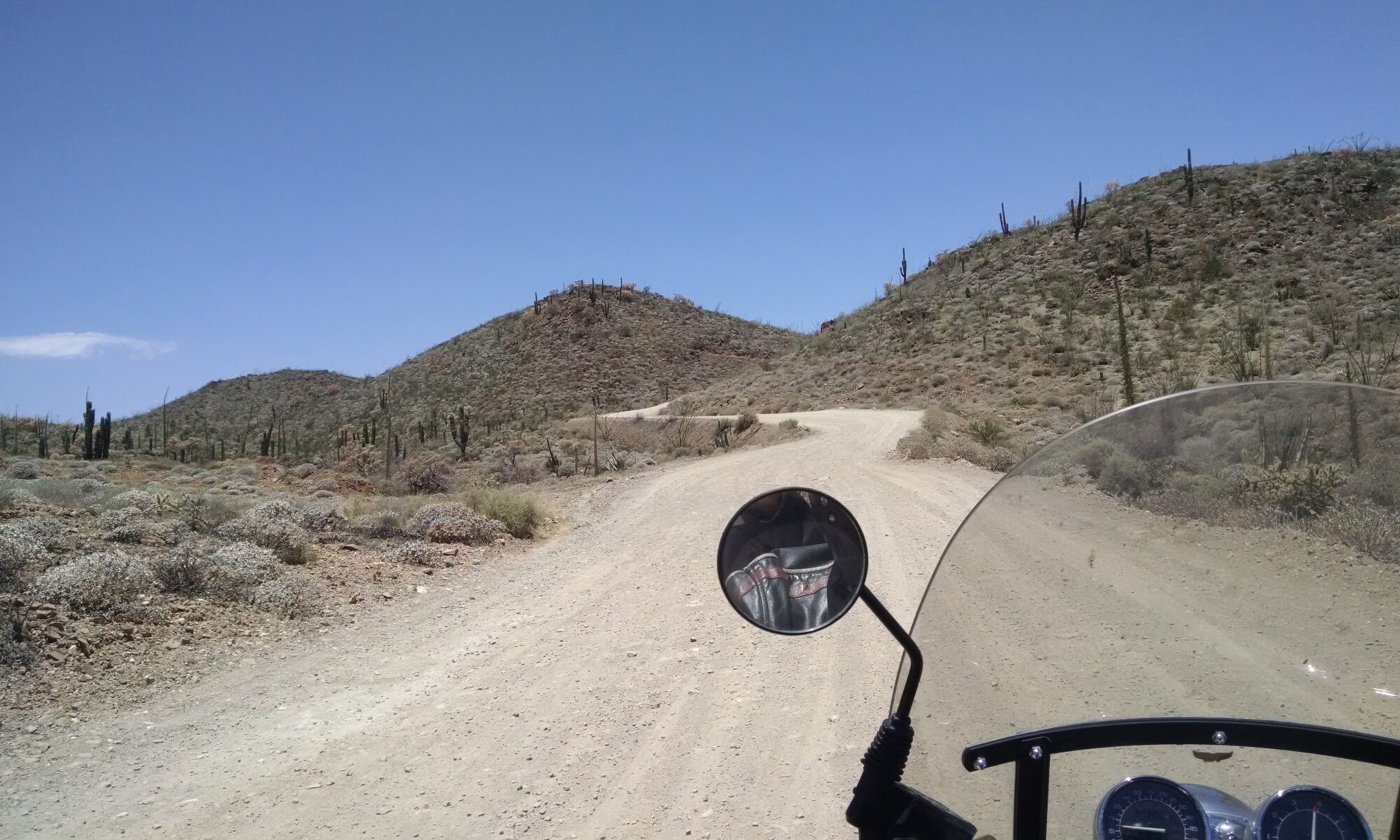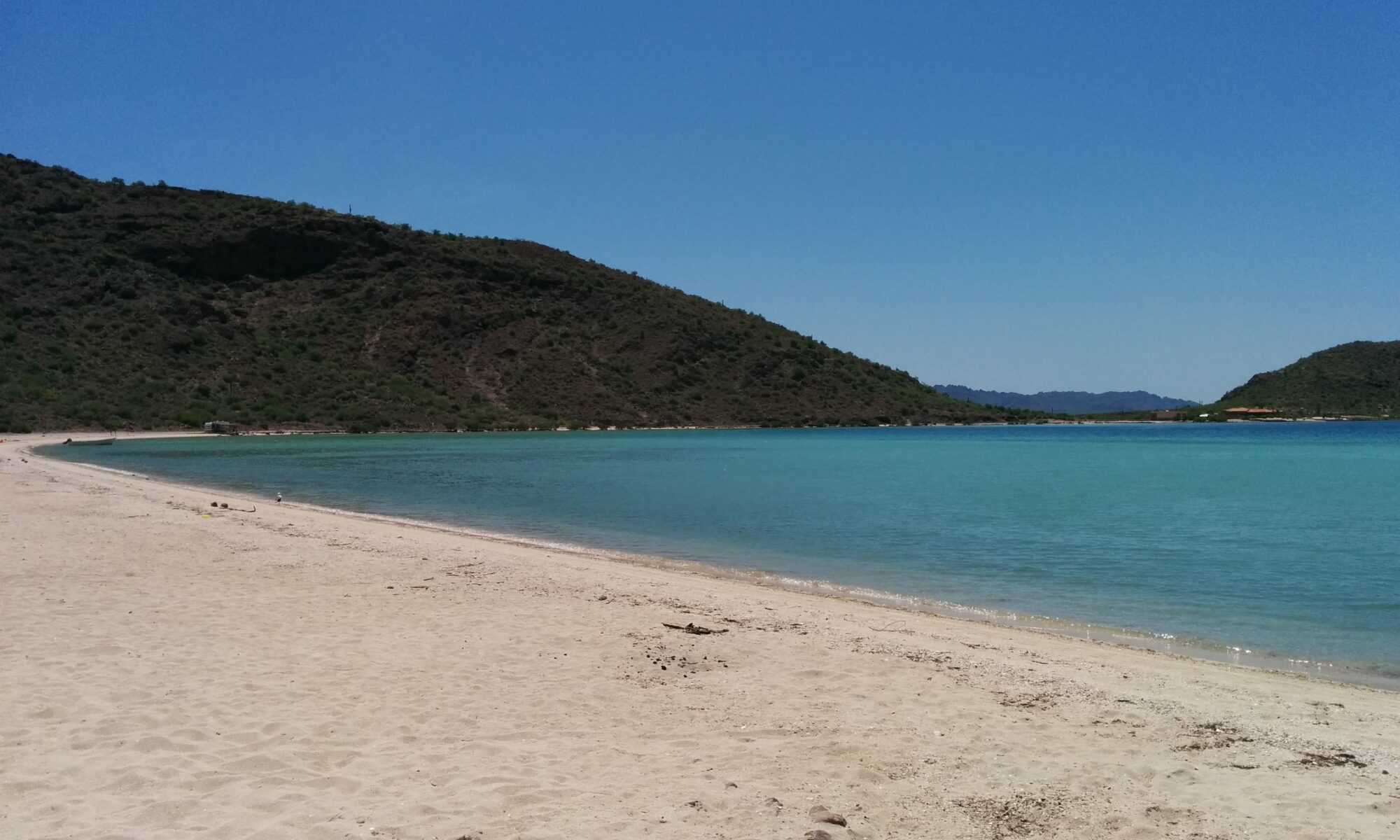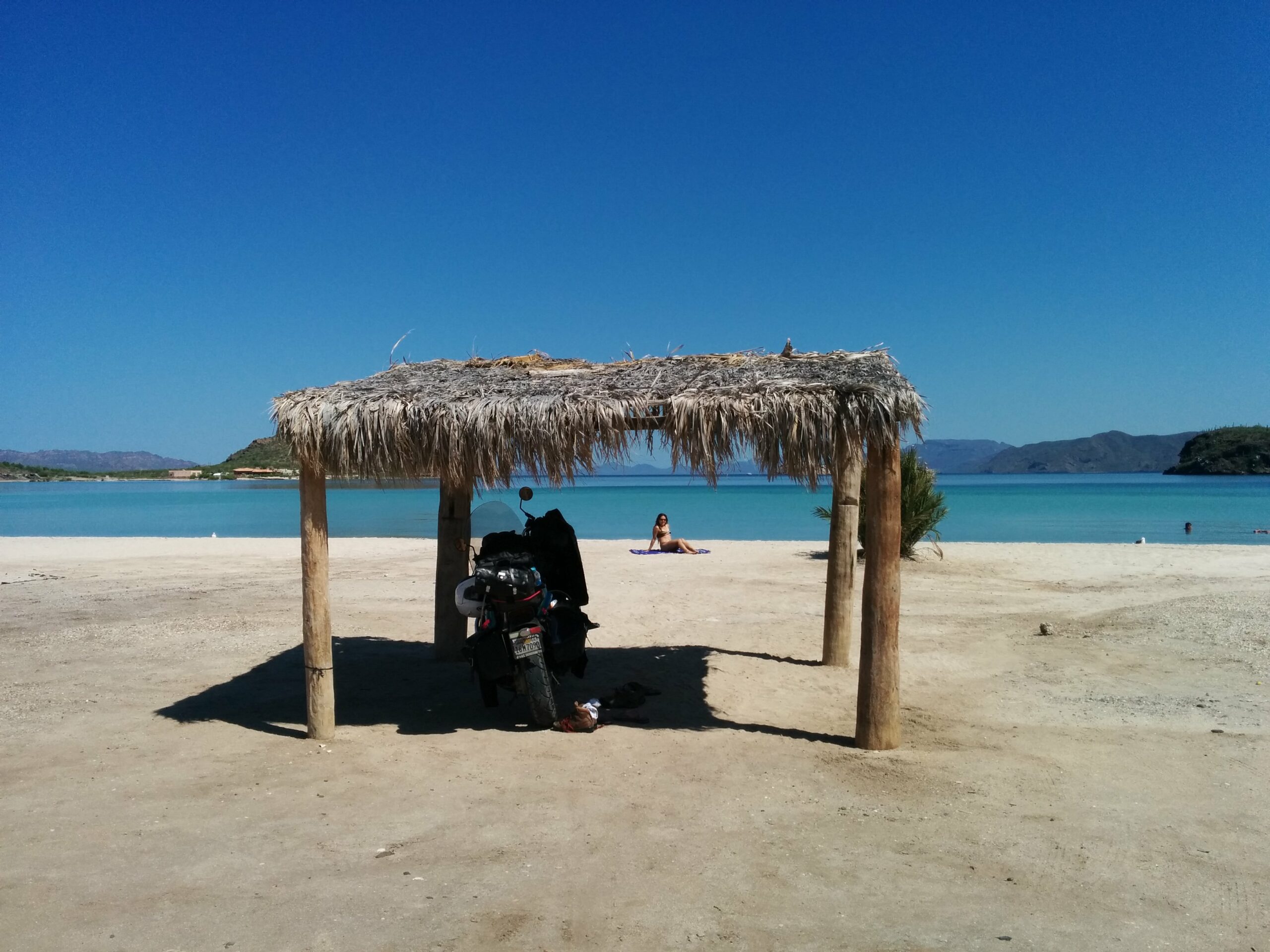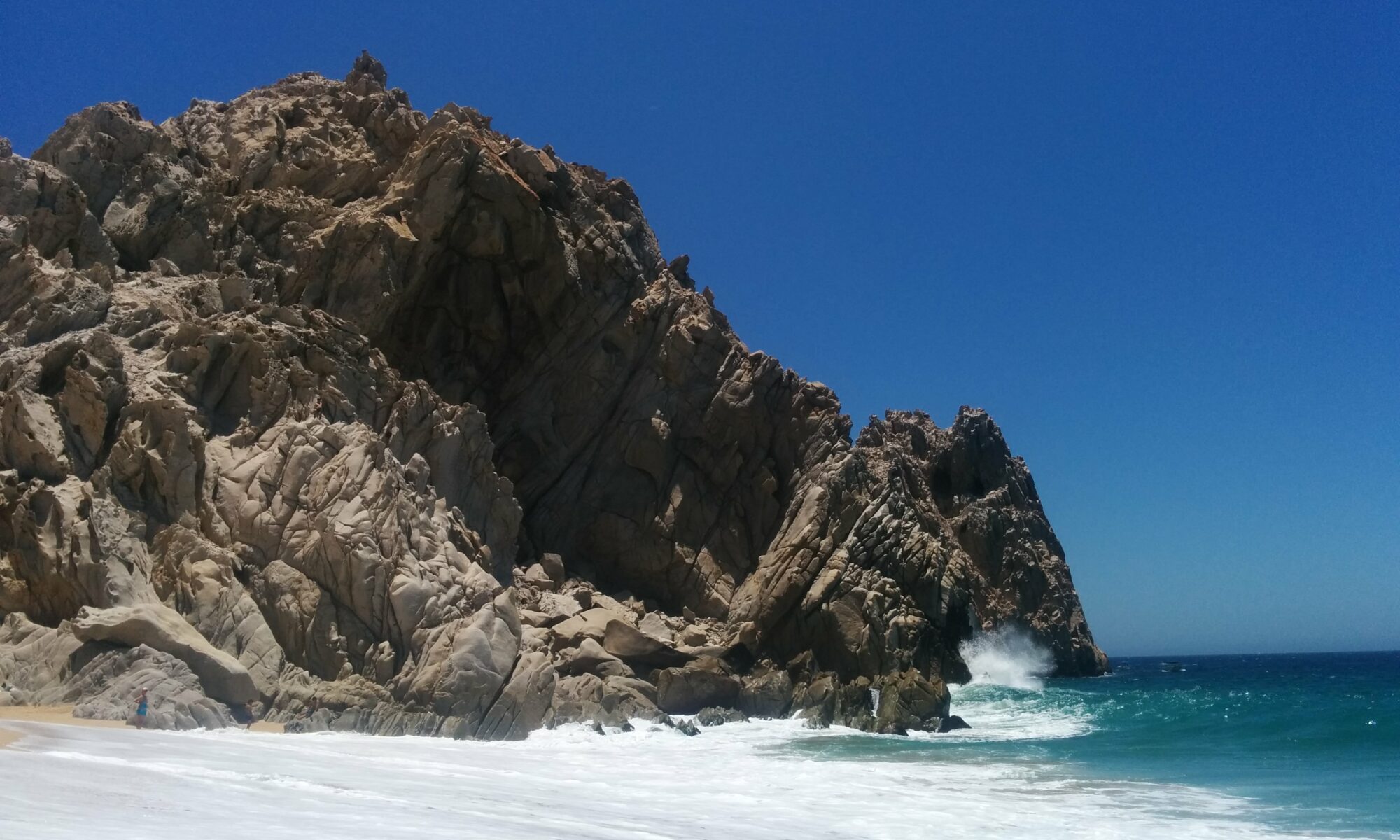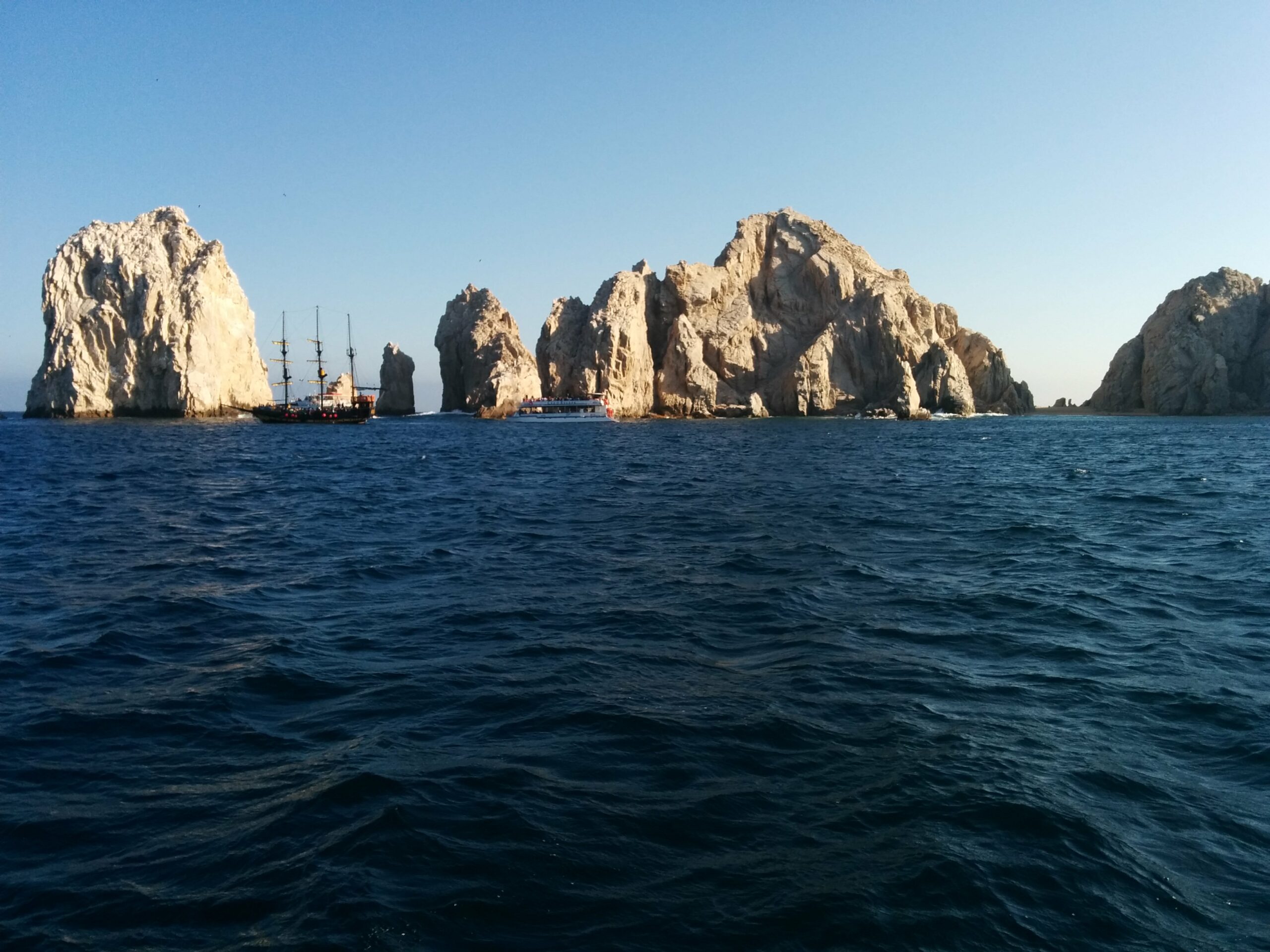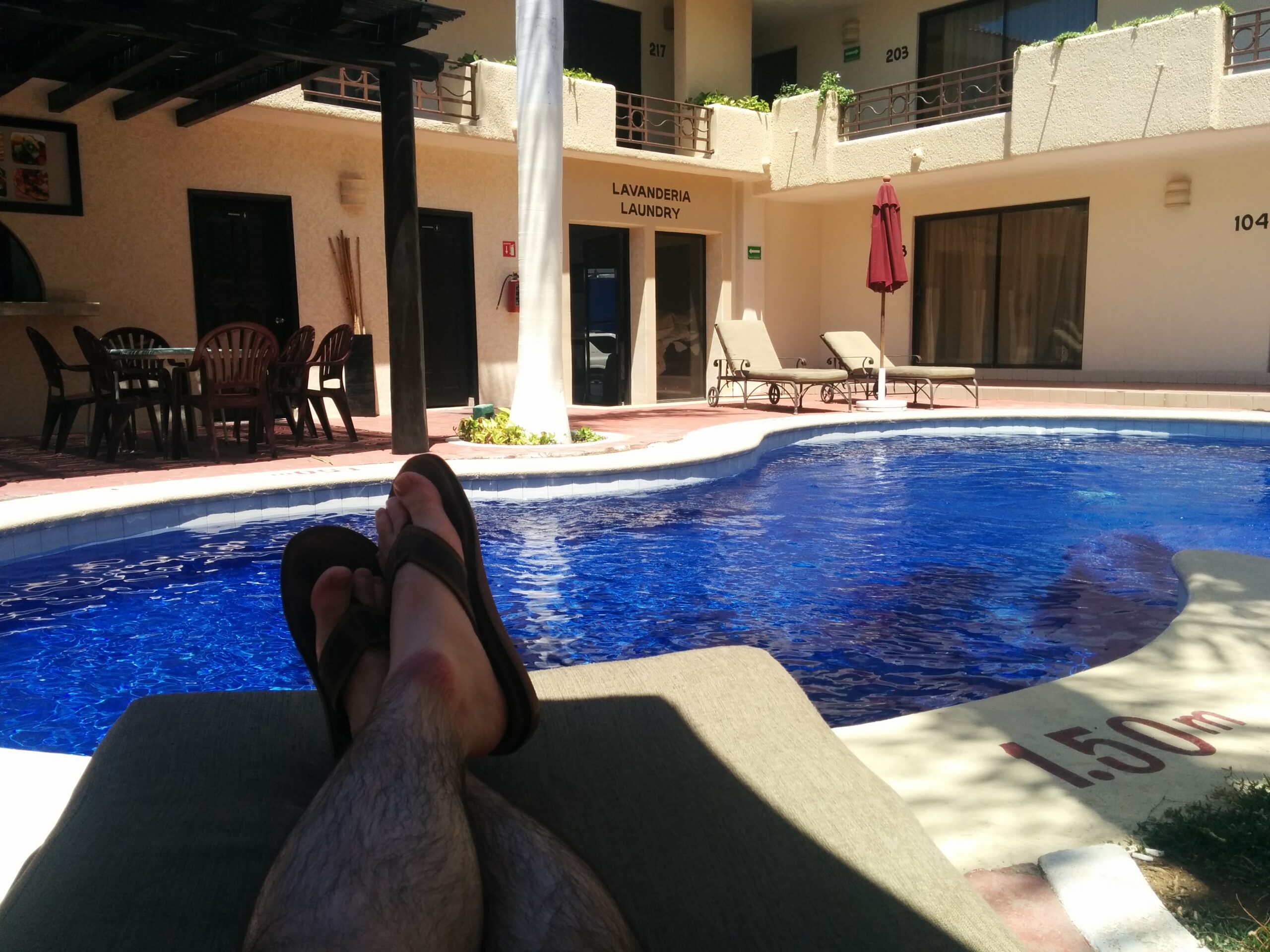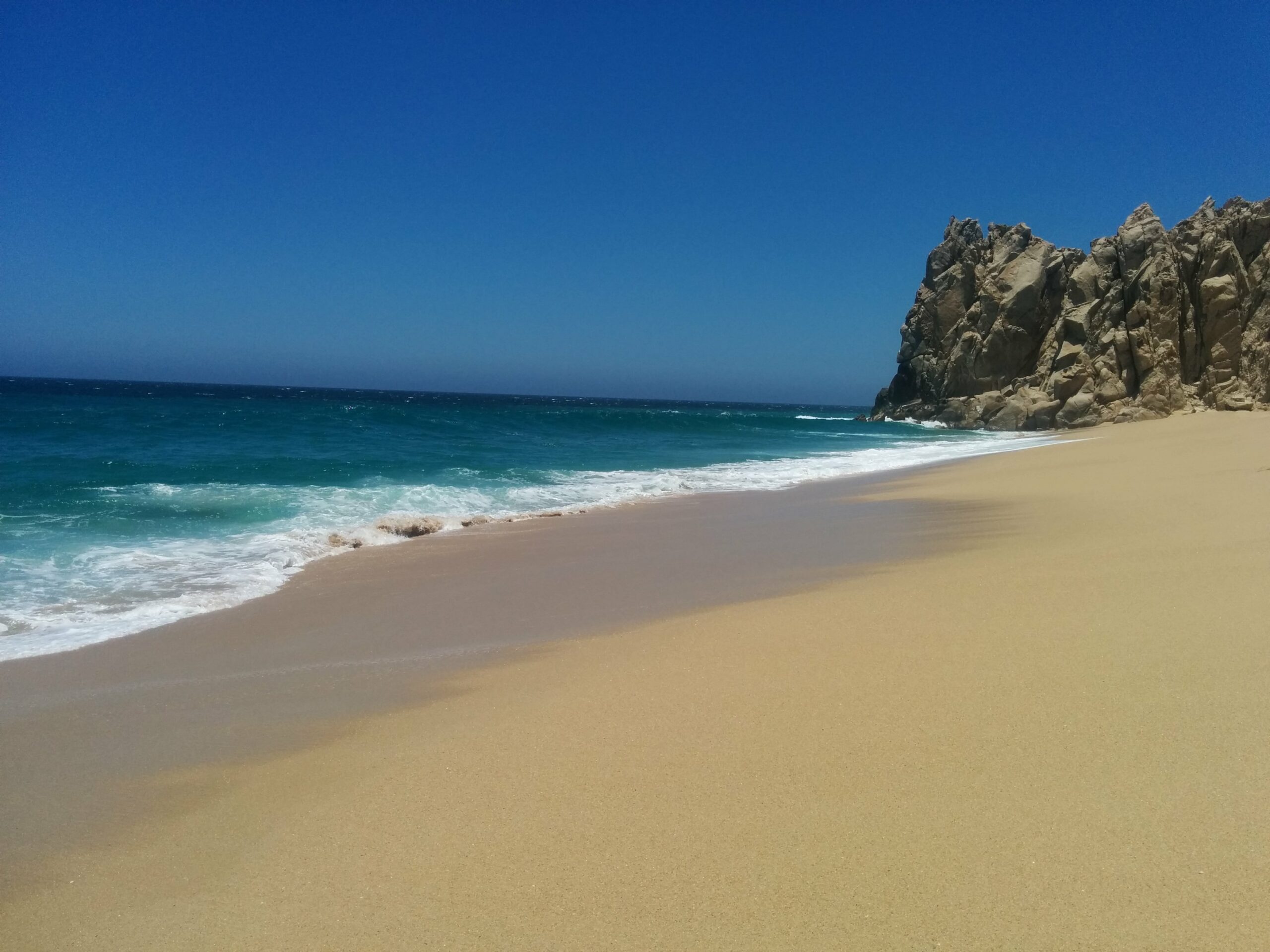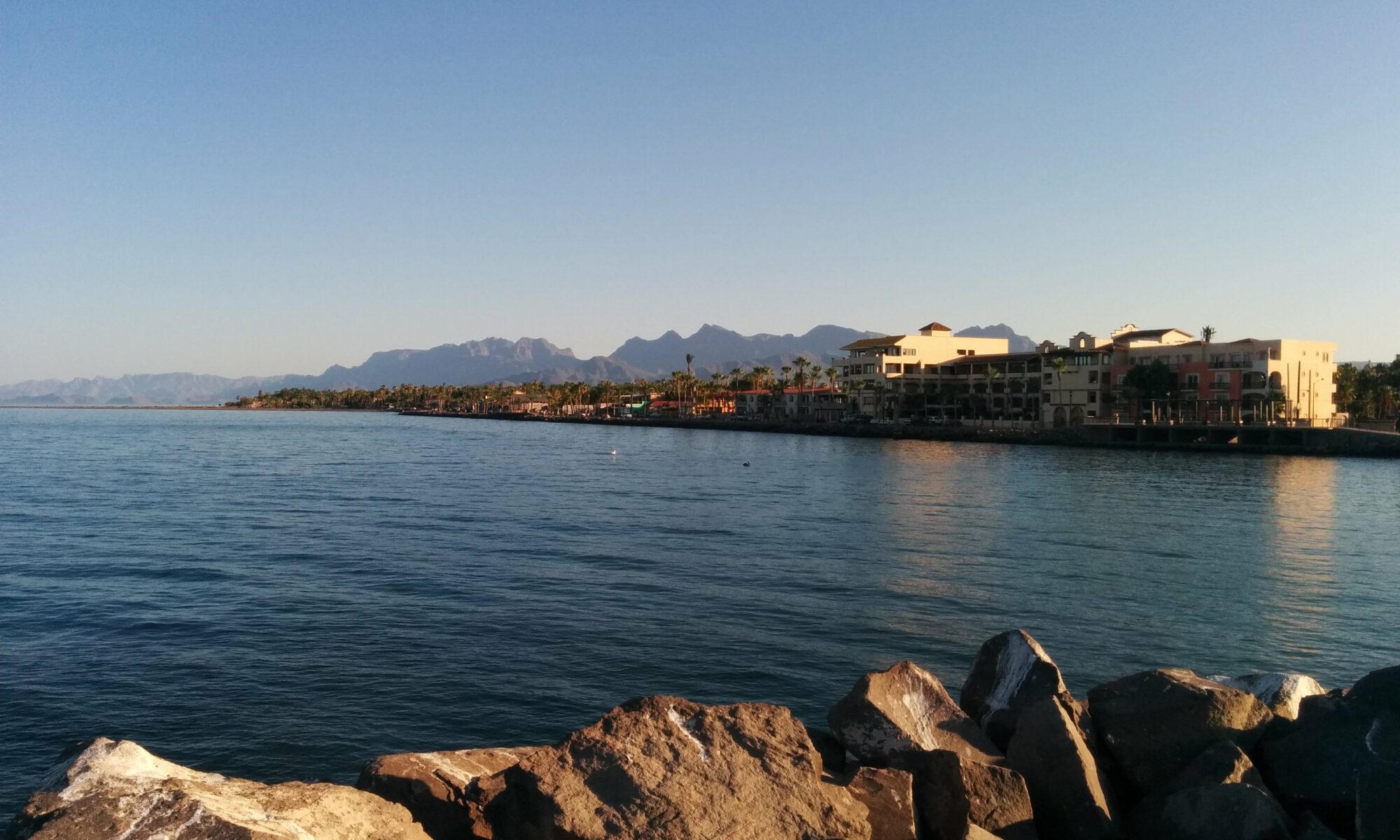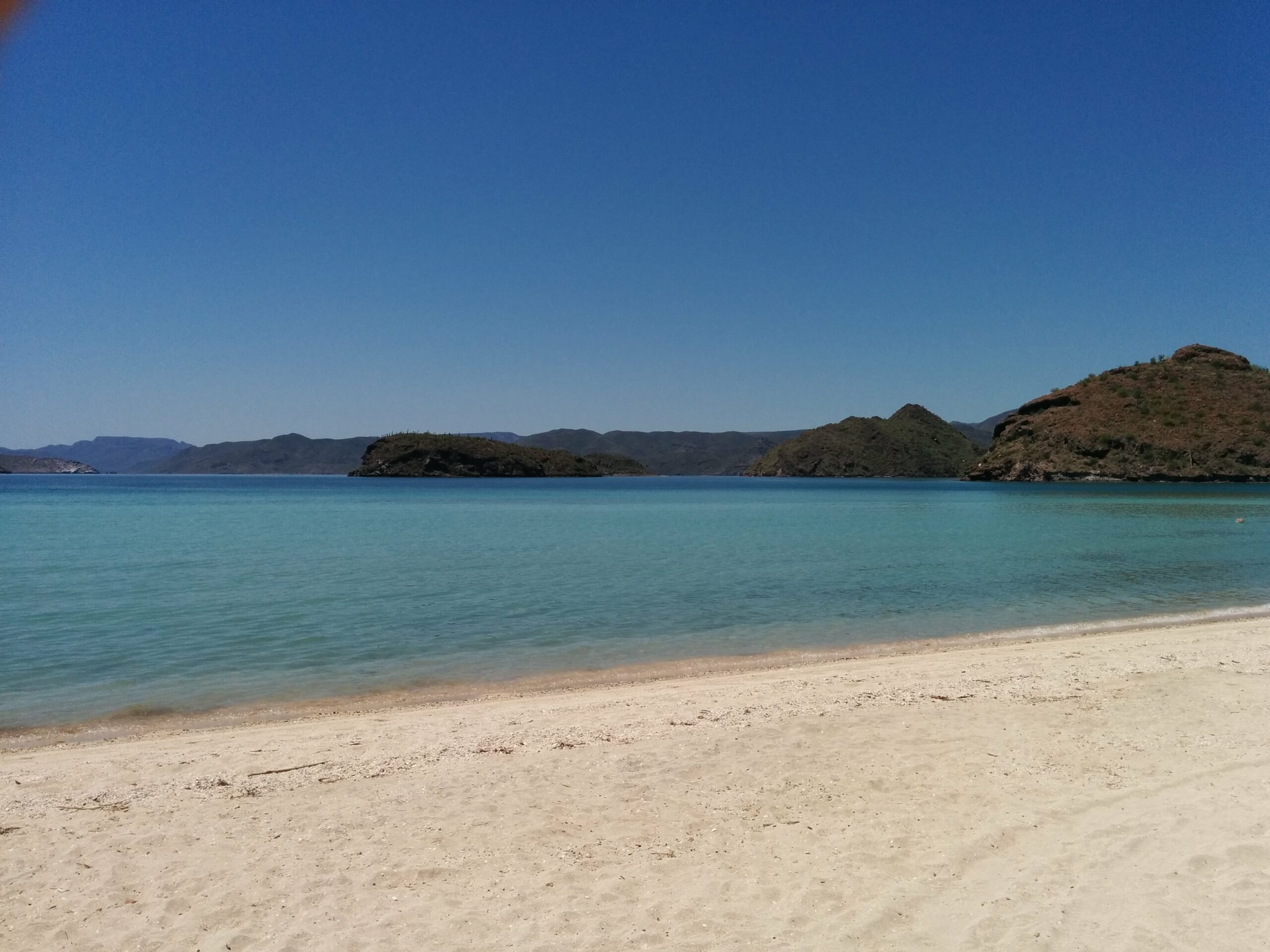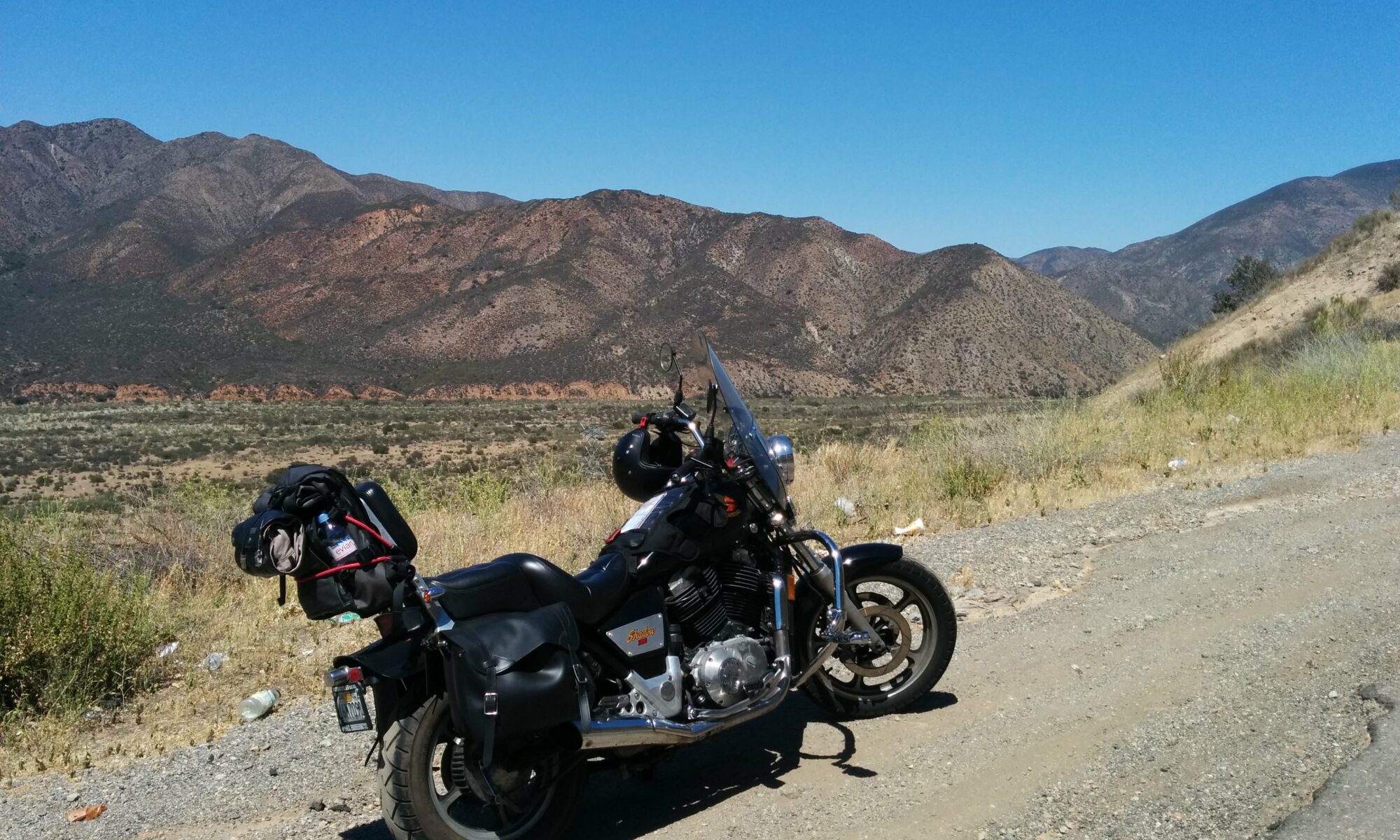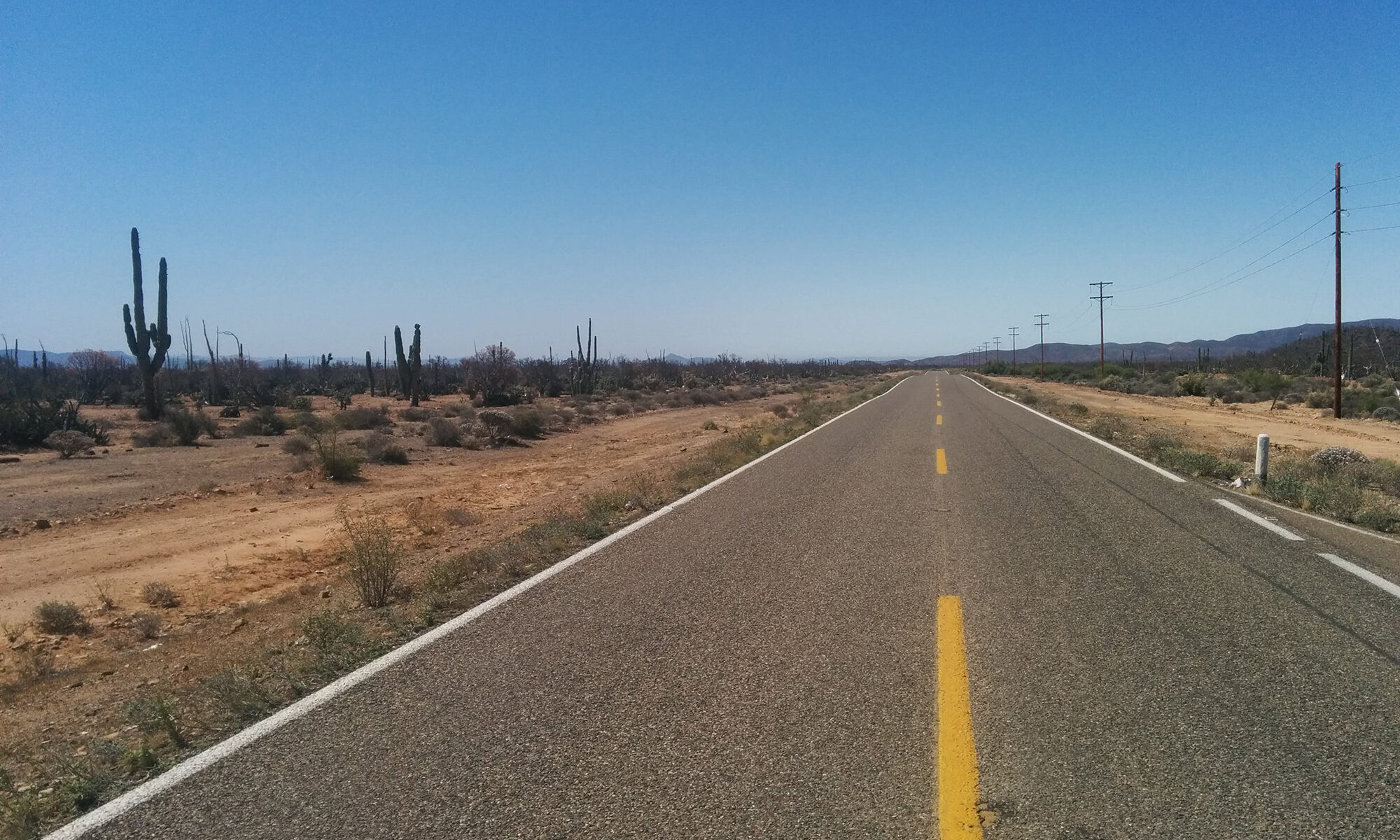The ride from Gurrero Negro to San Felipe was, without a doubt, the most difficult ride I have done in my life so far. It consisted of three stages.
The first stage was short and easy: a quick ride north from Gurrero Negro into Il Desierto Central, stopping for gas at a hutch on the side of the road, filling our empty water jugs with reserve fuel for the next leg. This part of Mexico-1 runs along the West coast, and The Pacific keeps the air cool and pleasant.
After about 85 miles we came to the junction for Mexico-5—the second part—which would take us from the speedbump named Chapala (hard to call it a town) East across the desert back to The Sea of Cortez and the coastal town of Bufeo, and then North to San Felipe. We’d heard various inconsistent reports about the quality of the road, ranging from “terrible with large rocks, deep gullies, and no sign of civilization for dozens of miles in the sweltering heat” in the late summer of 2013 to “mostly paved with a small stretch of dirt and gravel with a road crew working to pave the rest” in the fall of 2014. One of these would be doable on the Shadow, the other wouldn’t. Considering it’d been the better part of a year since the last report, we decided to give it a go.
Heh.
The first eight miles were much as we expected: dirt, gravel, fairly flat, and managable. Around mile 8.5 the hills and gullies started, with sand drifts in the bottom of the gullies. By mile 10 the road presented hardcore rocks, six to thirteen inches in size and sharp, jutting out from the dirt as it wound its way along cliffsides through the mountains, with only the sides of the road remotely passable without utterly wrecking the undercarriage of the bike, merely scraping and banging it instead. At around mile twelve the sides became sandy and steep, threatening to throw the rear tire of the bike over the side of these steep edges, and to cast us down the slope and into the cactus fields below.
I found myself alternating between two tactics for navigating this road. Either I was in first gear, slowly crawling over the smaller rocks toward the center of the road if I could handle them, scraping and bashing my undercarriage on the ones I couldn’t avoid; or I was in second gear, darting from the right shoulder to the left and back, seeking out both the shoulder with less sand (or rocks) and a pass through the center which wouldn’t break open my crankcase.
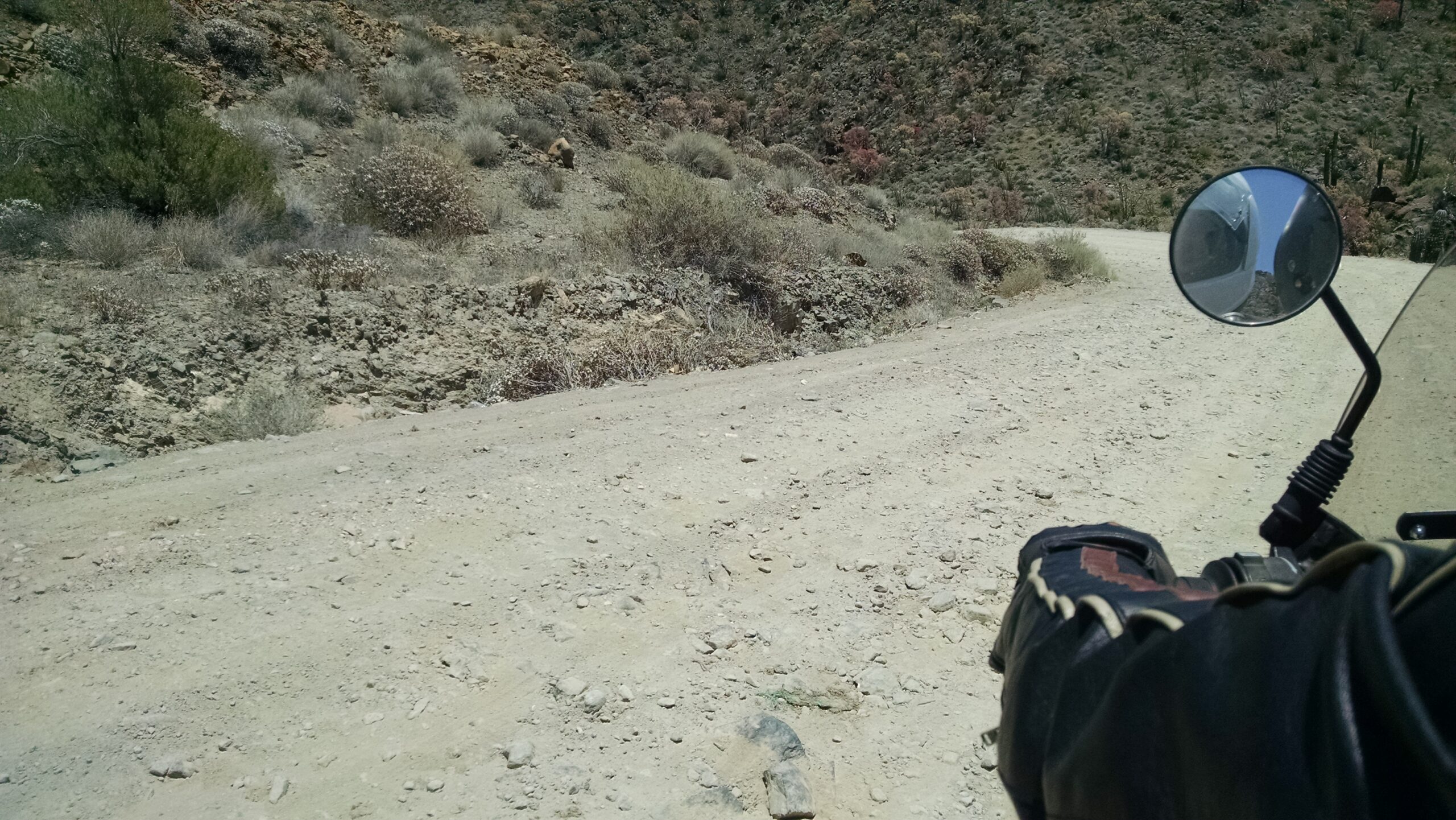
On a 200lb. dirtbike, alone, this would’ve been a breeze. On an eight-hundred pound cruiser, fully loaded with saddlebags, tankbag, trunk, and passenger, this was madness. I kept thinking to myself, “If we breakdown, or worse yet crash, it’ll be perhaps a day or more in the 100°F desert before someone comes along to find us. And what the fuck would I do about my ruined bike all the way out here?” Scenarios of trying to hire someone, not speaking any Spanish myself, to haul my bike out from a gully in this desert, up a cliff, spun in my mind. Then there would be the problem of getting it fixed, or back into The States inoperable. I wasn’t sure which would be harder. If I even survived such a crash. What about my passenger? If she was wounded, or worse…
Fear gripped me. I was already sweating from the work of the ride while in the heat with my leather jacket, so I coudn’t differentiate the fear-sweat from what I already was sweating. Small blessings. I pushed the thoughts from my mind to focus on a particularly threatening stretch of jagged rocks around a cliffside curve. Fear is only good for solving problems if used as a gentle motivator, and I already had plenty of motivation. Crawling over them as I was, it struck me that I didn’t really know how I was managing to get the bike over these large rocks.
“I’m not sure how I’m managing to get the bike over these large rocks,” I said aloud. That was when we fell.
The front tire had hit a particularly steep slanted rock, pitching the bike to the right, and I was unable to compensate without risking my leg on uncertain footing, so down we went. We fell toward the wall on our right, away from the cliff on the left, and the bike fell hard on the engine guard and saddlebag, laying on the jagged rocks beneath it. We both tumbled off, surprised, but unhurt.
The saddlebag was soft and filled with soft things, so it absorbed a lot of the impact without harm. The crash bar on the right side took the rest of the blow, and had bent back about 45°. Hoisting the bike back up, we inspected it for other damage, and largely found none. This was fantastic—the saddlebag was merely dusty, and the crashbars had done their job. Being easy enough to install myself, I was certain I could replace them if we got back to The States.
The bike started, so we got back on and went back at it. We passed a large crane rolling slowly along some miles further, and other large construction equipment some more miles beyond that, so it’s clear that progress is being made, if very slowly. We even passed “El Campo Sacrificio” (The Field of Sacrifice), a tiny, abandoned waystation evoking a kind of Burning Man appearance.
After two hours and twenty-four miles, The Sea of Cortez peaked out between two mountains as we crested a hill, and I saw something ahead of us which made my heart skip a beat.
Pavement.
Oh what a wonderful road it was. We sailed along at 75mph on what must now be Mexico’s most beautiful, smoothest, newest road; freshly paved and painted, with the turquoise Sea of Cortez on our right for miles and miles. This was the third and final part of today’s ride. It would be two hours of bliss as we rolled smoothly along toward San Felipe, a fitting reward for the trial we’d just endured.
San Felipe itself is formerly a bustling tourist hotspot, recently in a slide toward disrepair and ambivalence. Food and rooms are still cheap, if somewhat funky, but the sun and beaches largely don’t care, and spending a full day here in the stupefyingly warm water on the long sandy strands was just the kind of recuperation I like after the trial that was Route 5. An excellent capstone.
The next leg of the journey would take us through Mexicali and back into the USA, where hopefully my easy entry more than a week ago would prove to be just that.
